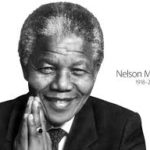 Emotional intelligence is the ability to combine intelligence, empathy, and emotions to enhance thought and understanding of interpersonal dynamics. Nelson Mandela (18 July 1918 – 5 December 2013) is perhaps best known for his high emotional intelligence amongst many other things. According to Coleman (2008), emotional intelligence is the capacity of individuals to recognize their own, and other people’s emotions, to discriminate between different feelings and label them appropriately, and to use emotional information to guide thinking and behavior.
Emotional intelligence is the ability to combine intelligence, empathy, and emotions to enhance thought and understanding of interpersonal dynamics. Nelson Mandela (18 July 1918 – 5 December 2013) is perhaps best known for his high emotional intelligence amongst many other things. According to Coleman (2008), emotional intelligence is the capacity of individuals to recognize their own, and other people’s emotions, to discriminate between different feelings and label them appropriately, and to use emotional information to guide thinking and behavior.
 Mandela had the ability to remain focused in the face of challenges. His composure and speech during the acrimonious Rivonia Trial of 1956 is a testimony to this. After being eventually charged with treason in apartheid South Africa, he was sentenced to 27 years in prison. As a prisoner at Robben Island, Mandela was a highly motivated prisoner, he (as a lawyer) represented prisoners (free) when they were charged for offences and encouraged fellow political prisoners to study hard in order to improve themselves.
Mandela had the ability to remain focused in the face of challenges. His composure and speech during the acrimonious Rivonia Trial of 1956 is a testimony to this. After being eventually charged with treason in apartheid South Africa, he was sentenced to 27 years in prison. As a prisoner at Robben Island, Mandela was a highly motivated prisoner, he (as a lawyer) represented prisoners (free) when they were charged for offences and encouraged fellow political prisoners to study hard in order to improve themselves.
Indeed, as a leader with high emotional intelligence, he never dwelt in the past rather, he learnt from the past to ensure that the injustices of apartheid would never be allowed hunt South Africa again. This is why reconciliation is a key feature of his presidency and legacy.
As President of South Africa, as a gesture of goodwill and commitment to national reconciliation, Mandela invited the last white president of South Africa, F.W. de Klerk to become his first Deputy President (Sampson 2011, p. 492). Moving into the presidential office at Tuynhuys in Cape Town, Mandela allowed de Klerk to retain the presidential residence in the Groote Schuur estate, instead settling into the nearby Westbrooke manor, which he renamed “Genadendal”, meaning “Valley of Mercy” in Afrikaans (Sampson 2011, p. 502).
 Mandela also actively encouraged other nations to resolve conflicts through diplomacy and reconciliation (Sampson 2011, p. 555). Within South Africa, Mandela pushed for national reconciliation, as reflected in the Truth and Reconciliation Commission (TRC), which sought to heal South Africa’s apartheid wounds and promote the idea of a “Rainbow Nation”, that was all-inclusive, irrespective of race, class, ethnicity, religion and creed (Meredith 2010, pp. 523).
Mandela also actively encouraged other nations to resolve conflicts through diplomacy and reconciliation (Sampson 2011, p. 555). Within South Africa, Mandela pushed for national reconciliation, as reflected in the Truth and Reconciliation Commission (TRC), which sought to heal South Africa’s apartheid wounds and promote the idea of a “Rainbow Nation”, that was all-inclusive, irrespective of race, class, ethnicity, religion and creed (Meredith 2010, pp. 523).
Despite all the challenges he faced Mandela, was never easily distracted. He remained committed to his primary vision and goal of a free South Africa. Mandela was also empathetic. He established the Nelson Mandela Foundation to advance  human rights in general, and the rights of marginalized children, in particular.
human rights in general, and the rights of marginalized children, in particular.
Indeed, despite all the challenges; as a prisoner (under apartheid) and president (in post-apartheid South Africa), Mandela focused on the positive possibilities that South Africa presented, such as a constitutional democracy that could become a model for other countries around the world. He was a gracious, balanced, empathetic leader, with excellent social skills- the hallmarks of a leader with high emotional intelligence.